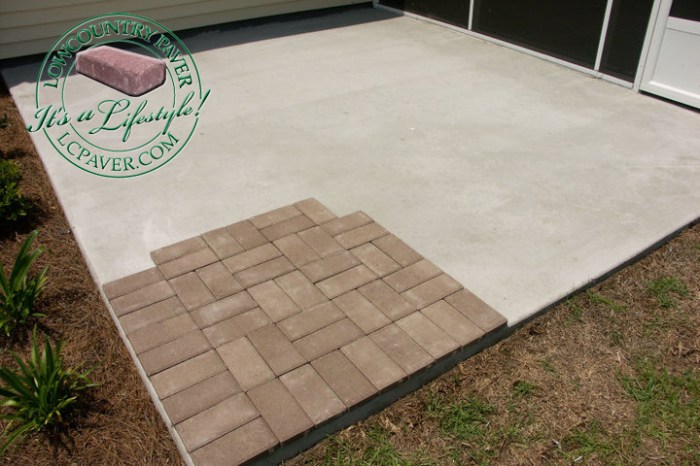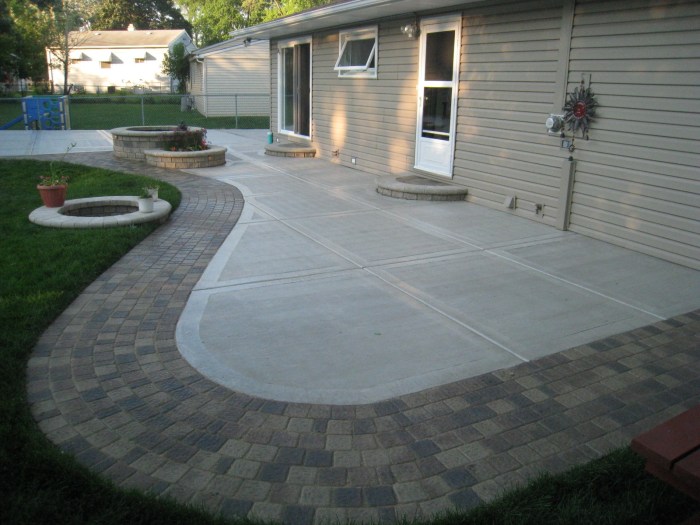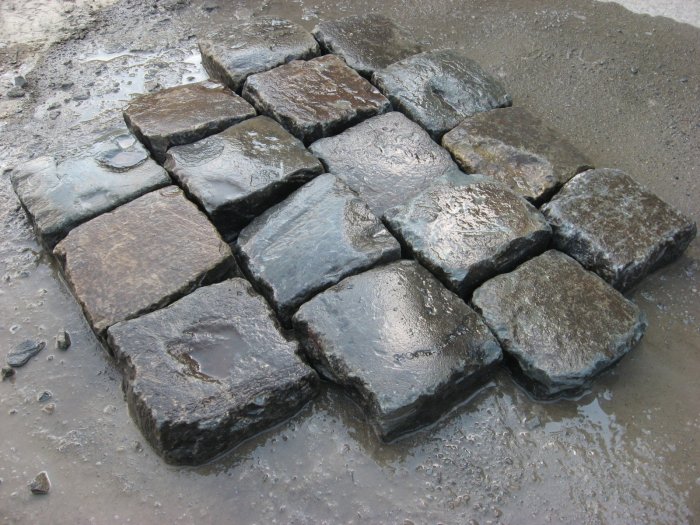Elevate your outdoor living area with the versatility and durability of thin patio pavers. These innovative pavers offer a wide range of benefits, making them an ideal choice for creating stunning and functional patios. Whether you’re a seasoned DIY enthusiast or seeking professional guidance, this comprehensive guide will provide you with all the essential information you need to make informed decisions about thin patio pavers.
From understanding their unique characteristics and advantages to exploring installation techniques and design considerations, we’ll delve into every aspect of thin patio pavers. We’ll also cover maintenance tips and repair options to ensure your patio remains a beautiful and inviting space for years to come.
Thin Patio Paver Overview
Thin patio pavers, also known as thin-set pavers or dry-laid pavers, are a versatile and modern alternative to traditional thick pavers. These pavers are typically 1-2 inches thick, making them lightweight and easy to install. They are designed to be installed on a thin layer of mortar or sand, eliminating the need for a concrete base.
Thin patio pavers are available in a wide range of materials, including natural stone, porcelain, and concrete. Natural stone pavers, such as slate, granite, and limestone, offer a timeless and elegant look. Porcelain pavers are highly durable and resistant to fading, scratching, and staining.
Concrete pavers are a budget-friendly option that comes in a variety of colors and textures.
Advantages of Thin Patio Pavers
- Lightweight and easy to install: Thin patio pavers can be easily installed by DIYers, saving on labor costs.
- Versatile design options: Available in a wide range of materials, colors, and textures, thin patio pavers can complement any outdoor décor.
- Durable and long-lasting: Made from high-quality materials, thin patio pavers are resistant to cracking, fading, and wear.
- Permeable: Thin patio pavers allow water to drain through, reducing runoff and preventing waterlogging.
- Cost-effective: Compared to traditional thick pavers, thin patio pavers are more affordable due to their reduced material and installation costs.
Disadvantages of Thin Patio Pavers
- Not suitable for heavy traffic areas: Thin patio pavers may not be suitable for areas with heavy foot traffic or vehicle loads.
- Susceptible to movement: Thin patio pavers may shift or move over time, especially if not properly installed.
- Prone to cracking: Thin patio pavers can be more susceptible to cracking compared to thicker pavers.
- Requires a level surface: Thin patio pavers require a perfectly level surface for proper installation, which may involve additional preparation work.
Installation of Thin Patio Pavers
Installing thin patio pavers involves preparing the base, laying the pavers, and ensuring proper spacing and leveling.
Preparation of the Base
The base should be well-compacted and level. For a stable base, excavate the area to a depth of 4-6 inches, ensuring a slight slope for drainage. Fill the excavated area with a layer of crushed stone or gravel, compacting it thoroughly using a plate compactor or hand tamper.
Laying Thin Patio Pavers
Start laying the pavers from a corner, ensuring they are level and aligned. Use a rubber mallet or paver tamper to gently tap the pavers into place. Work in small sections, checking the level and alignment as you progress.
Spacing and Leveling Techniques
For proper spacing, use paver spacers or sand to create even gaps between the pavers. Level the pavers using a level or straightedge, adjusting the base material or paver height as needed. A slight slope for drainage is recommended to prevent water accumulation.
Design Considerations for Thin Patio Pavers
When designing a patio using thin pavers, there are several factors to consider to create an aesthetically pleasing and functional space. These factors include pattern, layout, borders, and accents.
Patterns and Layouts
Thin patio pavers offer a wide range of patterns and layouts to choose from. Some popular patterns include:
- Running bond: Pavers are laid in a straight line, with each row offset by half a paver.
- Herringbone: Pavers are laid in a zig-zag pattern, creating a classic and elegant look.
- Basket weave: Pavers are laid in a criss-cross pattern, creating a more intricate and sophisticated look.
Design Ideas
Here are a few design ideas for thin patio pavers:
- Use different colors or textures of pavers to create a unique and eye-catching look.
- Incorporate borders or accents around the perimeter of the patio to define the space and add visual interest.
- Use pavers to create pathways or stepping stones through the garden or yard.
Borders and Accents
Borders and accents can be used to add definition and visual interest to a patio made of thin pavers. Borders can be made of a different material, such as brick or stone, or they can be created using a different pattern or color of pavers.
Accents can be used to highlight specific areas of the patio, such as a fire pit or seating area.
Maintenance of Thin Patio Pavers
Maintaining thin patio pavers is crucial for preserving their aesthetic appeal and longevity. Regular cleaning and occasional maintenance are essential to prevent stains, damage, and premature deterioration.
Cleaning and Maintenance
To keep thin patio pavers clean, sweep or hose them down regularly to remove dirt, debris, and loose particles. For deeper cleaning, use a mild detergent solution and a soft brush. Avoid using harsh chemicals or abrasive cleaners, as they can damage the pavers’ surface.
Preventing Stains and Damage
To prevent stains, seal the pavers with a penetrating sealer specifically designed for thin pavers. Reapply the sealer as recommended by the manufacturer to maintain its protective barrier. Additionally, avoid using salt or deicing agents on the pavers, as they can cause discoloration and damage.
Repair and Replacement
If thin patio pavers become damaged or stained, they can be repaired or replaced. For minor cracks or chips, use a thin-set mortar or epoxy resin to fill the gaps. For more extensive damage, individual pavers can be removed and replaced with new ones.
When replacing pavers, ensure they are of the same size and thickness to maintain a level surface.
Summary
Thin patio pavers empower you to transform your outdoor space into an extension of your living area. Their versatility, durability, and aesthetic appeal make them a worthwhile investment for any homeowner looking to enhance their property. Embrace the possibilities offered by thin patio pavers and create a stunning outdoor oasis that will be the envy of your neighborhood.



